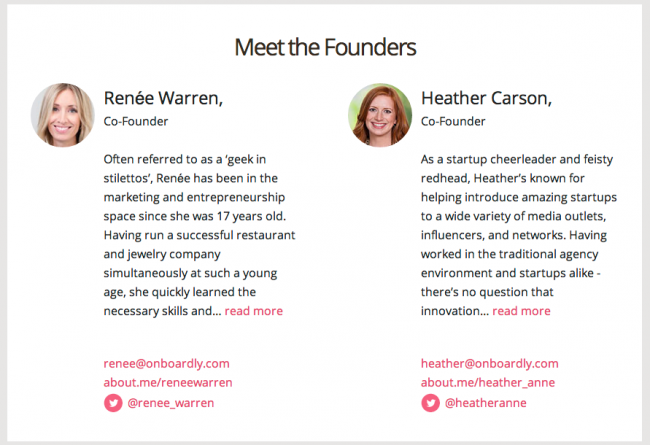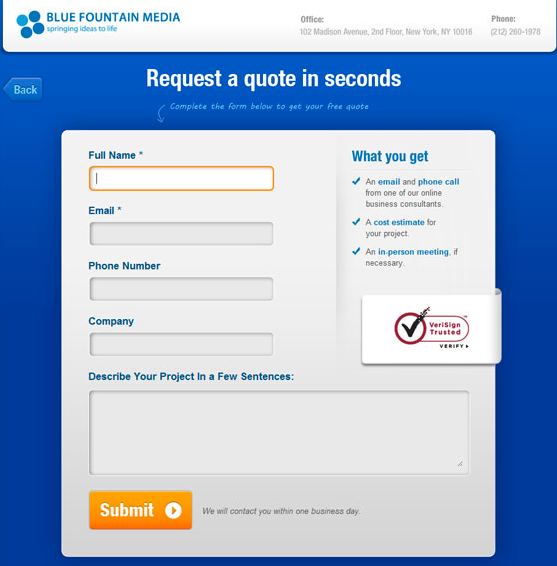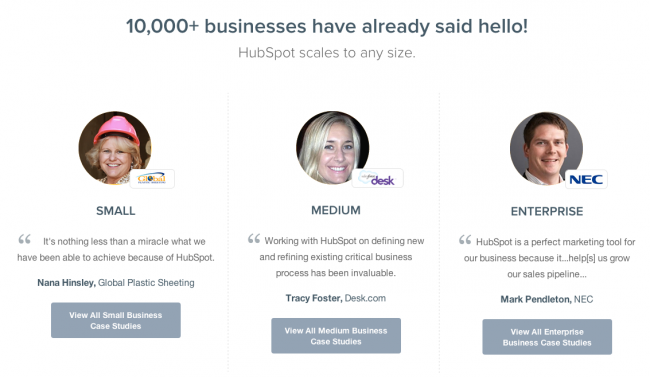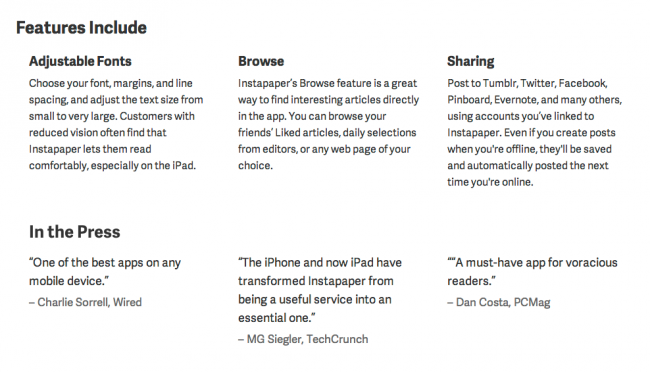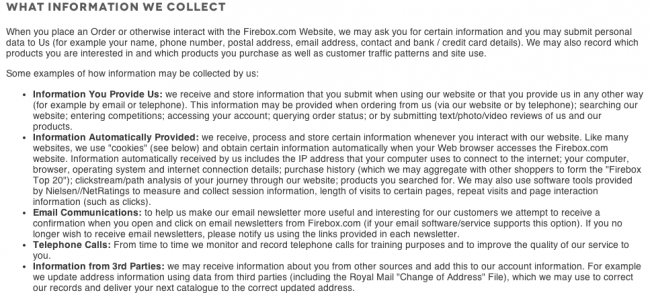No matter how useful, innovative and all ‘round amazing your product or service is, the harsh reality is that no one is going to buy it if they don’t trust you.
Have you ever researched several websites to see who could give you the best deal on a product? Chances are, several places sold it for similar price points and you had to make your decision based on the supplier’s website. How did you decide who to buy from?
You wanted to know you’d get exactly what you were promised. In other words, you wanted to buy from someone you trusted.
So what is it that makes you trust some websites and be suspicious of others? Here are 10 of the biggest design mistakes that will cost your customers’ trust.
1. An unprofessional looking website
We’ll start simple. Bad web design makes you look bad. I know, I know, it sounds obvious, but it’s downright scary how many ugly, difficult to use websites are still out there (check out these examples of bad web design from topdesignmag.com).
But your product is amazing, it should sell itself, why do you need to invest in web design?
According to research by BaseKit, 70% of people claimed they wouldn’t buy from a company with a badly designed website while two thirds of business owners said they believed that website design has more impact on a business’s success than its location.
Tip: Make sure your website is clear, concise and current with simple navigation so your visitors understand exactly what they should do.
2. Hiding your personality
Visitors to your website need to know that there are real people behind your company – people they can trust. Unfortunately, most of us don’t trust complete strangers, so let your customers get to know you before asking them to separate with their hard-earned cash.
There are several ways you can show prospects your personality and put them at ease.
Introduce your team personally
Why not introduce the people behind your company?
Onboardly introduce their team with photos, Twitter handles and biographies, with the option to “read more” if you like.
You don’t have to introduce your whole team, but showing your founders, or a few key staff, will put prospects at ease.
Make sure your copy expresses your personality
We all want to sound clever, but be aware that complex copy can leave readers with the impression that you’re hiding something.
Write as if you are talking to your prospects face to face. If you wouldn’t say it in real life, don’t include it in your website copy.
Tip: Record yourself talking about your product and write your copy to reflect the way you speak in real life.
3. Making it difficult to contact you (and not replying when people do)
No matter how good your website is, and how well you explain your product, people will always have questions. If they can’t figure out how to contact you, they’re going to become suspicious.
Some people like to talk on the phone, some like to email, some people prefer a contact form. Give your customers as many contact options as you can and let them choose what makes them most comfortable.
You could even show who will be dealing with incoming queries, like targetprocess…

Tip: Set yourself a deadline for replying to emails and post it on your contact page, or as a response to support requests (e.g. We ansimpleweb.co.uker all support requests as quickly as we can, usually within 2 working days).
4. Not giving trust symbols a chance
Some people simpleweb.co.ukear by them, others think they’re completely unnecessary, but if you don’t give trust symbols a chance, you’ll never know how they can work for you.
When Blue Fountain Media added a VeriSign symbol to their payments page, they saw a 42% increase in sales and Danish e-commerce company House of Kids saw a 32% increase in conversions when they displayed the E-Mark badge.
Tip: Try A/B testing trust symbols on your payments page to see how they affect your conversion rates.
5. Not providing testimonials
Show your customers that they’re not the first and only people to trust you, and, what’s more, trusting you has paid off for other people.
Get testimonials from other happy customers and post them on your website along with photos and links to their websites.
Hubspot gives testimonials from small, medium and enterprise businesses and point out that “10,000+ businesses have already said hello!” If 10,000 people have already trusted you, make sure prospective customers know that, they’ll feel a lot safer.
Tip: Prove that your testimonials are from real people with pictures, logos and links
6. Not bragging about your awards/ accreditations
If your business has won an award, received an accreditation or been hyped up in the press, you should be bragging about it. But remember, no one likes a show-off, so try to keep it subtle.
iOS app Instapaper display 3 quotes from well known tech publications at the bottom of their web page, beneath a summary of their features, to give you that extra push to purchase.
Tip: If you’ve won an award, why not display the award badge on your homepage or try the “about us” page if you want to be more subtle.
7. Not being transparent
If your customers can’t find the information they’re looking for, they’ll probably assume you’re hiding it. Most people don’t read privacy policies and only realise how their information is being used when it doesn’t meet their expectations, so take every opportunity to let your customers know how you’ll use their information (e.g. asking permission to use location data).
Of course, you should have a privacy policy in place but don’t assume that everyone is going to read it. For those that do, why not write it in plain English instead of the kind of legal jargon that can be so offputting?
Firebox present their privacy policy in two formats, Technical P3P and Plain English. Take a look at this except from their Plain English Privacy Policy (right click and open in new tab to enlarge):
It’s clear what information Firebox are collecting and while the policy is written in plain English, it still sounds professional.
Another interesting take on the privacy policy comes from Upworthy, who explain how they’ll use your information in an infographic.
Tip: Tell your customers how you’ll use their information when they give it to you. If you ask while they’re just trying to assess your product, they’re more likely to accept/decline without fully understanding.
8. Not sharing customer reviews
Like testimonials, reviews give prospects the chance to see what other people think of your product before they buy it. However, we all know that testimonials are selective – no one is going to display a negative testimonial on their homepage.
So while testimonials show that your product has been helpful for some of your customers, reviews give prospects a chance to see what everyone is saying, good and bad.
While negative reviews aren’t ideal, they’re not the end of the world and a negative review here and there is often considered a marker of authenticity.
According to reviews and rating provider Revoo:
“Sixty-eight per cent of consumers trust reviews more when they see both good and bad scores, while 30% suspect censorship or faked reviews when they don’t see bad scores.”
If you’re getting a high volume of negative reviews it’s probably time to rethink your strategy…
Tip: Moderation is fine but if you publish customer reviews on your website, don’t cut the negative ones – they might be making you appear more trustworthy
9. Letting your content slip behind
An out of date website is going to leave prospects wondering if your company is still active and send them looking for someone more reliable.
You don’t need to redesign your homepage every month. Here are a few of the most commonly neglected factors that can make your company appear obsolete:
- A copyright date from several years ago
- Lack of recent blog posts
- A “Meet the Team” page that features staff who left months ago
- Abandoned social media accounts
Tip: Take a good, long look at your website. If you’d never seen it before, could you tell it had been updated recently?
10. Skipping the blog
If you’re not blogging already, you should probably start right now.
Your blog is your chance to show your customers that not only do you know your industry, you live and breathe it, you care about your product and you care about the people it helps.
Your blog shouldn’t be chock full of self-promotional posts (which, let’s face it, usually aren’t particularly interesting), but rather a useful resource for your target audience.
If you sell clothing, why not start a fashion blog with the latest street style, updates on your design process and photos from fashion events? If you provide financial support, why not write advice posts based on common questions your clients ask and updates on the latest changes from HMRC?
Tip: What problem does your product or service solve? Write blog posts aimed at people who have that problem.
Conclusion
Your website is the online face of your company. Yes, it needs to sell your product, but it also needs to reassure people that you are a genuine, trustworthy supplier who has your customers’ best interests at heart.
How do you decide if you trust a company based on their website? Share your experiences in the comments.
